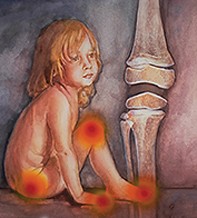Peer Reviewed
Feature Article Rheumatology
Juvenile idiopathic arthritis: an update on diagnosis and management
Abstract
This article is a summary of the new guidelines on juvenile idiopathic arthritis developed by a specialist advisory group in conjunction with the Royal Australian College of General Practitioners. These guidelines provide recommendations for the early diagnosis and multidisciplinary management of this condition in the primary care setting.
Key Points
- Juvenile idiopathic arthritis (JIA) is a chronic, autoimmune, inflammatory joint disease. It is defined as persistent arthritis of unknown aetiology that begins before 16 years of age and persists for at least six weeks.
- JIA occurs in one to four per thousand children in Australia and is the most common rheumatic disease in children and adolescents.
- The diagnosis is largely clinical and involves persistently swollen stiff joints.
- The aim of treatment is the induction of remission and control of the disease to minimise pain and functional loss, and maximise quality of life. There is currently no cure for JIA, although with the increasingly effective new therapies, long-term disease remission is a realistic aim. A multidisciplinary approach provides optimal treatment.
- The prognosis is worsened by late/misdiagnosis and delay in effective therapy.
Purchase the PDF version of this article
Already a subscriber? Login here.

